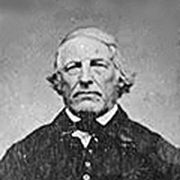

 |

|
|
Uncle Sam and John Bull The U. S. had no supply system for its army and was forced to rely on local contractors for supplies and provisions. Many of these contractors were free to take advantage of the government, so a system was put in place requiring all contractors to mark their goods. In this way a ledger could be kept noting the deliveries of supplies by each vendor. Sam Wilson was a meat packer in Troy New York, who supplied rations for the soldiers. Vendors had to stamp their name and where the rations were coming from, onto the supplies they were sending. Wilson's packages were labeled "E.A – US." which stood for Elbert Anderson (the contractor) and United States (meaning army supplies). In popular culture the US came to refer to Uncle Sam, meaning Sam Wilson, even though Uncle Sam is mentioned in the lyrics of Yankee Doodle as early as 1775: Old Uncle Sam come there to change Later the phrase came to symbolize the power of the Untied States Government. In popular culture in 1812 the actual character said to represent the people/citizens of the United States was called Brother Jonathan. Only after the War of 1812 did the two characters merge. Like Uncle Sam, John Bull was the common character used in the press to represent Great Britain starting in 1712. Dr. John Arbuthnot created the character in his pamphlet Law is a Bottomless Pit. Originally a figure of contempt, later British writers made Bull "a heroic archetype of the freeborn Englishman." American cartoonist's preferred the less heroic figure. Bull is usually portrayed as a stout, portly man in a waistcoat with light colored trousers and a top hat. Periodically he was drawn with an actual bull's head.
|